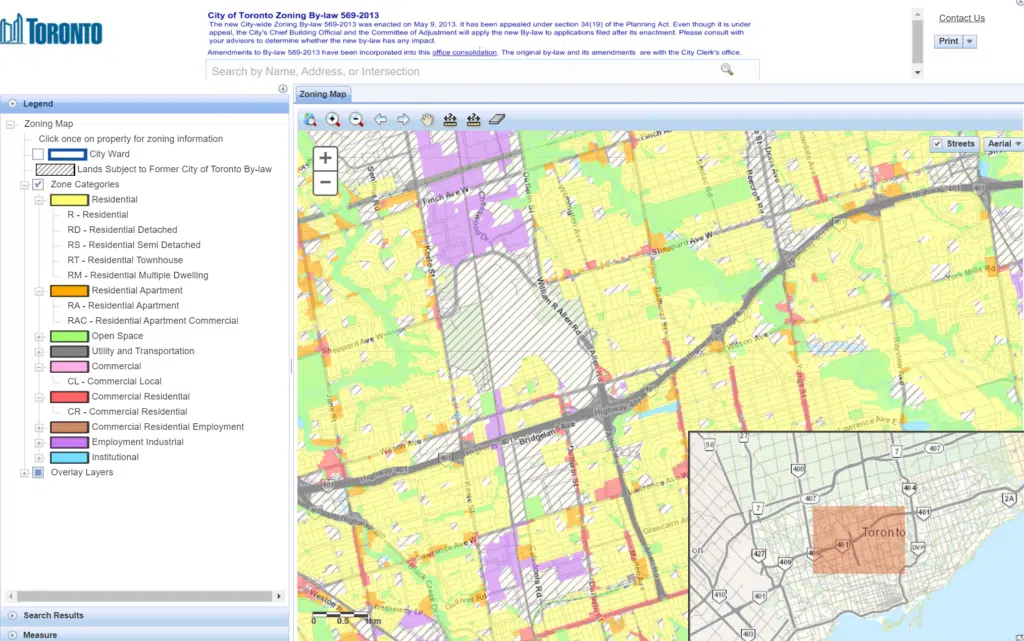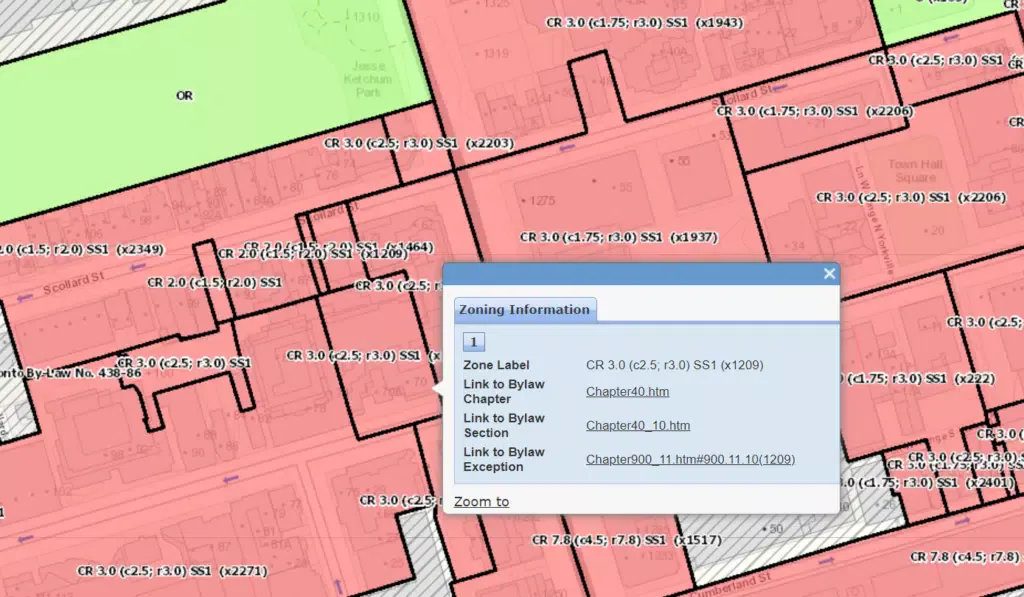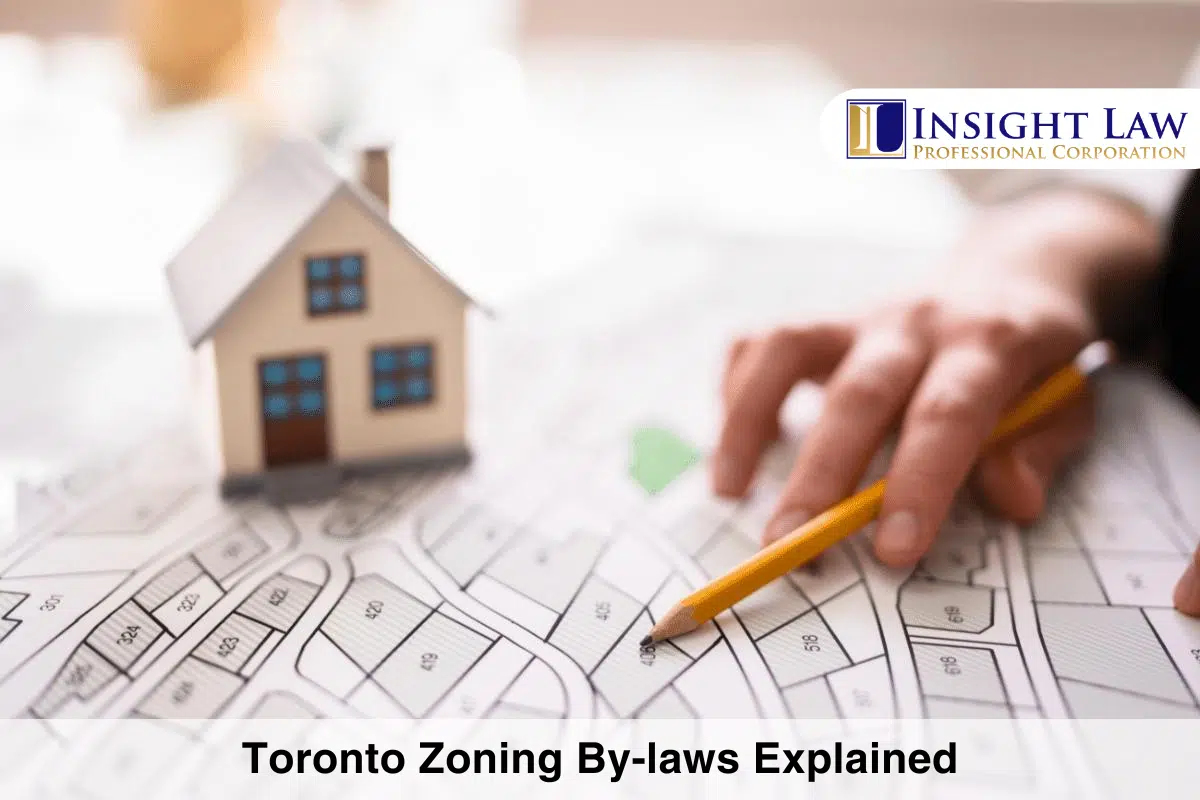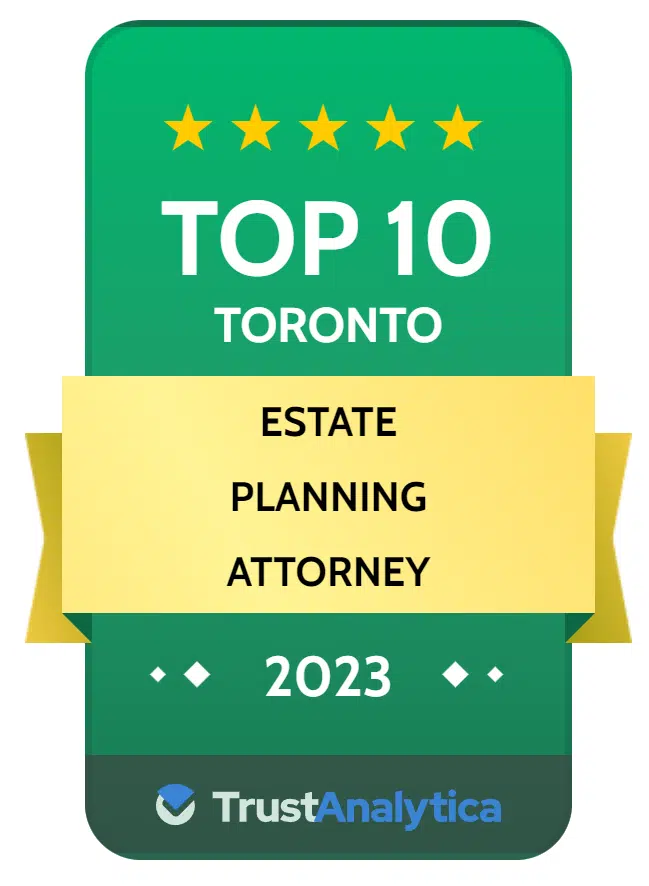Zoning by-laws are part of how Toronto regulates land use and city development. These by-laws control what can be built, where it can be built, and how properties can be used. Whether you are a homeowner planning renovations, a developer looking to build, or a business owner searching for the right location, understanding Toronto’s zoning rules is important.
Zoning regulations help ensure that land is used efficiently, neighbourhoods are well-planned, and property development aligns with city policies. This guide will explain what zoning by-laws are, how they work and how to check zoning for a property.
What is a zoning By-Law?
Zoning by-laws are municipal regulations that control land use and property development. They dictate how land can be used, the types of buildings allowed, and specific construction requirements. These laws help ensure that residential, commercial, industrial, and mixed-use areas are developed in a way that benefits the city and its residents.
Zoning by-laws are different from building codes. While zoning focuses on land use and property rules, building codes regulate construction safety, materials, and structural requirements. Both must be followed when building or renovating in Toronto. Failure to adhere to these regulations can result in penalties ranging from fines to legal action.
Governing Legislation
Some of the governing legislation is listed below:
- Ontario Planning Act (RSO 1990, c P.13): The Ontario Planning Act serves as the foundational framework for land-use planning in Toronto, specifying rules for zoning by-laws, land division, and official plans.
- City of Toronto Act, 2006 (SO 2006, c 11, Schedule A): This provincial act bestows Toronto with specific administrative powers to regulate land use within its jurisdiction, allowing for localized by-laws that cater to the city’s unique needs.
- Toronto Municipal Code Chapter 569, Zoning: Local zoning by-laws, such as Chapter 569, provide the specifics of what activities are permitted in each zone, as well as regulations on building height, lot size, and parking requirements, among other factors.
Types of Zoning in Toronto
Residential Zones:
Residential Zones are specific categories within municipal zoning by-laws designated primarily for living spaces and housing. Each letter code signifies a sub-category with its own unique set of regulations. Some examples:
- R: Generally stands for “Residential,” often used for single-family homes.
- RD: “Residential Detached,” typically allowing only detached single-family homes.
- RM: “Residential Multiple,” which can include multi-family dwellings like townhouses, duplexes, and apartment buildings.
- RA: “Residential Apartment,” usually designated for larger multi-unit apartment buildings.
To ensure a harmonious and planned residential environment, these zones govern various aspects, such as building height, lot size, setbacks, and sometimes even architectural style.
Commercial Zones:
Commercial Zones are specific categories in municipal zoning by-laws designated primarily for business activities. Each acronym represents a different sub-category with unique regulations and permitted uses. Some examples:
- CR: “Commercial Retail,” which typically allows for a mix of retail shops, services, and often residential units above ground level.
- CO: “Commercial Office,” designated mainly for office buildings and professional services.
- CS: “Commercial Service” usually allows a broader array of services such as repair shops, wholesalers, and sometimes light manufacturing.
- CM: “Commercial Mixed-Use” permits commercial, residential, and sometimes even light industrial uses.
These zones dictate requirements and limitations such as building height, floor area ratios, parking provisions, and setbacks to facilitate organized and compatible commercial developments.
How Do I Find Zoning for My Property?
Zoning By-law Interactive Map: The City offers an interactive zoning map that allows you to search by address, providing a detailed breakdown of the zoning by-law(s) applicable to the property.
The Zoning By-law Interactive Map and the Office Consolidation of Zoning By-law 569-2013 is provided for convenience purposes only. Every effort is made to ensure the accuracy of this information. However, for legal and planning application purposes, reference should be made to the original certified documents on file with the City Clerk, including the Zoning By-law and subsequent Zoning By-law amendments.

Searching your address will reveal the colour-coded zoning information affecting your property.

Hyperlinks will take you to the specific zoning by-law chapter.
Key Zoning Considerations
Zoning Amendments
Developers or property owners may apply for zoning amendments if they wish to use the land differently from the current zoning. For example, a property zoned as residential can be rezoned to commercial through a zoning by-law amendment, subject to approval and compliance with the Planning Act and local laws.
Nonconforming Uses
Nonconforming uses, which are usages that don’t align with current zoning but were legal when established, are generally allowed to continue as per Section 34(9) of the Ontario Planning Act. For example, an existing retail shop in an area rezoned to residential could typically continue operations under this provision.
Legal Implications and Penalties
Violations of zoning by-laws can lead to penalties, including fines, per the Ontario Planning Act.
Common Zoning Issues in Toronto
Building a Secondary Suite or Garden Suite: Zoning laws impact basement apartments, laneway houses, and garden suites. Homeowners must ensure their property meets zoning requirements for secondary dwellings before adding a rental unit.
Converting a Residential Property to Commercial Use: If a homeowner wants to use their property for business purposes (such as turning a house into an office or restaurant), they must check if commercial use is permitted in their zoning area. If not, they may need to apply for a zoning change or variance.
Property Development & Density Restrictions: Zoning laws control density to prevent overcrowding and ensure sustainable development. Developers must comply with height, lot coverage, and density limits when planning new residential or commercial buildings.
Get a Free Quote for Your Real Estate Transaction
Summary
Understanding Toronto’s zoning by-laws is key for individuals looking to invest in real estate in Toronto. If you plan to buy real estate in Toronto, seeking legal advice is essential to ensure you know the rules and regulations. A real estate lawyer can guide and advise you before you make a purchase decision and help you understand the legal implications of buying real estate in Toronto.
The information provided above is of a general nature and should not be considered legal advice. Every transaction or circumstance is unique, and obtaining specific legal advice is necessary to address your particular requirements. Therefore, if you have any legal questions, it is recommended that you consult with a lawyer.







